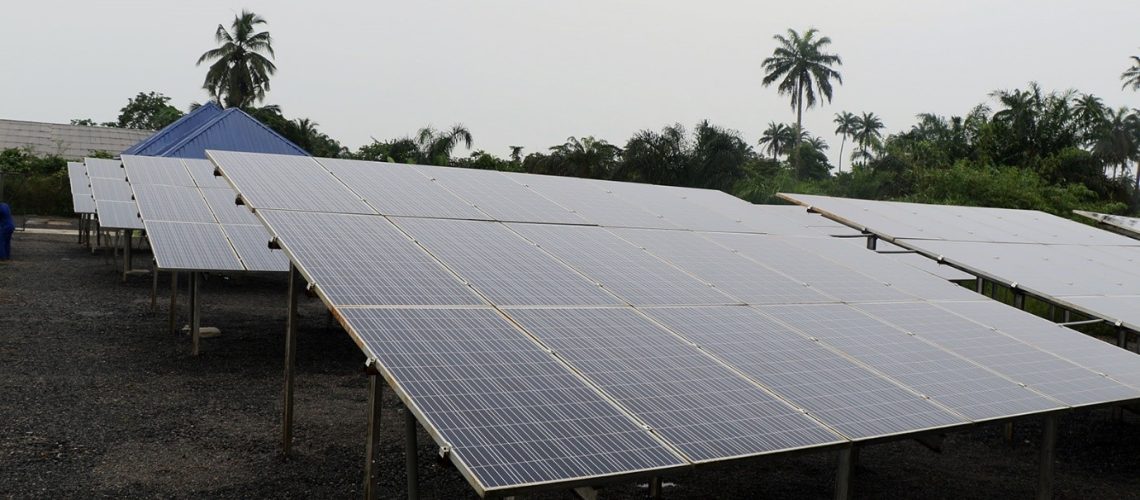There are certain factors to consider to make Mini-Grid Projects viable and sustainable in African countries. These factors can be viewed from the perspectives of preconstruction and post-construction activities in this article, using Nigeria as a case.
Generally, sustainability in projects entails an approach that balances the environmental, social, economic aspects of the project whilst working to meet the current needs of stakeholders without compromising or overburdening future generations. What constitutes sustainability for any energy project varies in terms of location, policy/legal framework, economic and environmental situations. This explains the need to carry out a project-specific sustainability test before embarking on one.
Narrowing down to mini-grids, particularly in the Nigeria situation, there are certain factors to consider to make your mini-grid projects viable and sustainable. These factors can be viewed from the perspectives of preconstruction and post-construction activities. They include:
- Appropriate Business Model:
It is important to have the right business model that enables the entrepreneur to create social value and maximize profit while helping to create new markets or further developing markets. Simply put, a sustainable business model should be commercially viable, it should be capable of existing for the future, it gives back to society and it utilizes resources that will be available for the long term. That said, some business model options for a Nigerian mini-grid project include:
- Distribution Company (DISCO) led model: This is a mini-grid project initiated by the DISCO alone or in collaboration with 3rd parties.
- Developer-led model: This is a mini-grid project completely championed by a mini-grid developer.
- SPV Led model: This is a mini-grid project initiated by an SPV owned and controlled by the DISCO and a Developer
- Community-Led model: This one originates from the community where the mini-grid is located.
- Collaborative Business Model: This is a hybrid of some sort where DISCO, Developer, and Community initiates and champions the mini-grid project. This is arguably the most sustainable as all stakeholders give their buy-in to the project and are willing to perform their obligations with respect to its execution.
- Data Availability:
Quality and reliable data play a vital role in driving investment decisions. For instance, it can help the developer determine the appropriate structure or technology to adopt such as grid extension, solar home systems, or mini-grid. Data can be gathered from existing data with DISCOs in charge of that area or the Regulatory Agency. Alternatively, data can be generated from the scratch, particularly for areas that have never had any form of power supply. Data should focus on enumerating consumers to ascertain:
- Lifestyle (e.g do they rely on grid power alone or do they source for alternative power supply)
- Power consumption level and what they use power for.
- Means of livelihood and how they earn
- How much they spend on electricity
- How much more or less are they willing to spend
- Plans or aspirations of consumers ( Do they have plans to own more appliances in the future)
- Stakeholder Engagement:
It is important to carry out accurate stakeholder mapping in order to engage properly before, during, and after the project. Stakeholders for mini-grid projects include the DISCO within the area, the community, local and state governments, and the regulatory agency(ies), etc.
Stakeholder engagements are key particularly as it relates to community enlightenment and sensitization. To ensure sustainability, the consumers need to know the implication of a mini-grid system to their energy usage/consumption, electricity bill, and the economic benefit to them. This is to get them prepared and ensure that they are willing to pay and make the necessary behavioral changes in the long term.
This engagement also extends to having an efficient grievance resolution mechanism where c onsumers can ventilate their grievances.
- Location:
To have a sustainable mini-project, the proposed location should ordinarily be densely populated with sufficient economic activities and occupied by consumers who are willing and able to pay for the power produced. The ability to pay can be improved by the stimulation of economic activities. Developers can go the extra mile by assisting the consumers to make productive use of the power by providing them with machinery such as fridges, freezers, grinding machines, etc.
This can be provided on an outright basis or a lease-to-own basis. Developers can also stimulate productive use of power by liaising with financial institutions to provide microfinance to consumers to start businesses that can make use of the power produced.
- Tariff:
To ensure sustainability, tariff structuring must be such that covers all costs of operation, maintenance, replacement of system components over the installations’ lifetime, (while avoiding the need for ongoing subsidies/grants for system operation). In fixing tariffs, educating consumers on energy conservation is fundamental so they do not have to incur huge tariffs. They can be advised to do away with appliances that consume so much power and adopt energy-saving appliances.
In a bid to keep tariffs reasonable, the developer can adopt a suitable technology that is not so capital intensive e.g mesh grids, adopting internal structures that reduce operational costs, accessing cheap finance, and installing meters to help consumers check their consumption
- Source of Power:
For sustainability, the source of the power for the mini-grid should be renewable or majorly renewable (where a non-renewable backup is required). This is expedient in the drive towards the transition to net-zero carbon emissions and overall climate protection. For instance, to access grants from the Rural Electrification Agency (REA) in Nigeria, at least 60% of the power source must be renewable.
- Security:
For long-term existence, the equipment and facilities must be well secured from vandalization and theft. This can be achieved by community enlightenment, insurance, and deployment of security operatives or technology.
Conclusion
Developing a mini-grid project within the Nigerian context requires much input from the developer to remain sustainable. This includes gathering data, providing finance to stimulate productive use of power, providing energy-saving appliances, energy education/enlightenment. State and local governments can ease this burden by providing security for the project, providing financial support, and working with the developer to stimulate economic activities to promote the productive use of power to be generated by the mini-grid.


